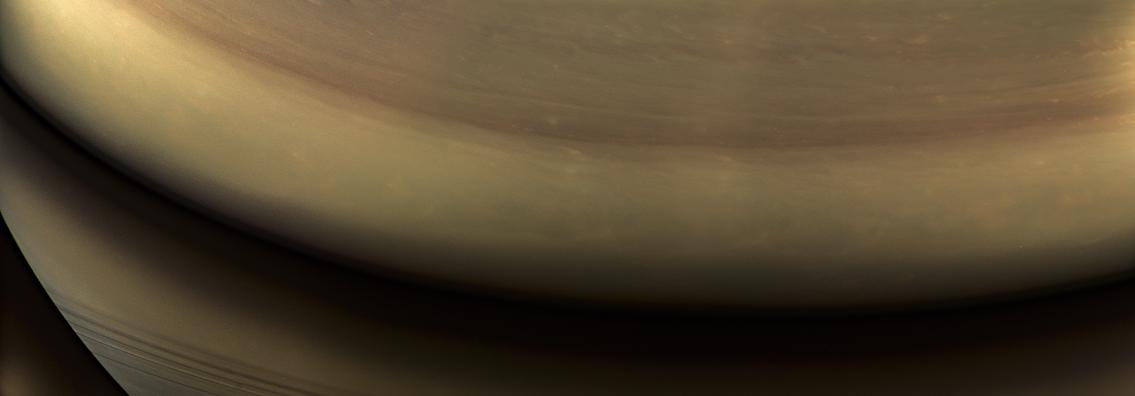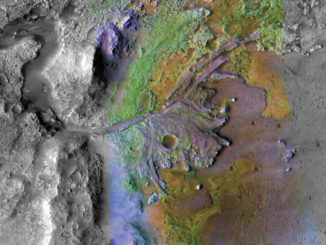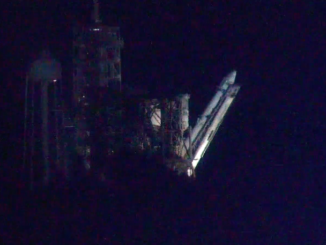
In the final hours of its pioneering mission, NASA’s Cassini spacecraft opened its cameras to gaze down on Saturn, recording views of a nighttime cloudscape illuminated by sunlight reflected off countless tiny ice particles in the planet’s rings.
A mosaic released last week by NASA’s Jet Propulsion Laboratory, which managed the Cassini mission, shows a patch of Saturn’s atmosphere on the planet’s night side. NASA said the mosaic was created with some of the final images taken by Cassini on Sept. 14 before the spacecraft plunged into Saturn and was crushed by pressure from its atmosphere, composed primarily of hydrogen.
The sepia tones of Saturn’s atmosphere were lit by reflected sunlight from the planet’s rings, and the mosaic includes the region where Cassini would dive into the planet hours later. The region rotated into daylight before Cassini made its final plunge.
The images used to create the mosaic were taken at a distance of approximately 394,000 miles (634,000 kilometers) from Saturn.
Cassini orbited Saturn more than 13 years, logging numerous flybys with the planet’s largest moon Titan, the ocean-harboring moon Enceladus and many of Saturn’s other companions.
NASA officials elected to end the mission last year to ensure Cassini made a guided dive into Saturn while still operational. Scientists did not want to lose control of the aging probe and leave open the possibility of a collision with Titan or Enceladus, moons which might be habitable for microbial life.
Scientists continue analyzing data from Cassini’s final months, which returned data on mass of the planet’s rings, which could tell researchers about their age and origin. Cassini’s instruments also radioed measurements from inside Saturn’s upper atmosphere during its final descent Sept. 15.
Email the author.
Follow Stephen Clark on Twitter: @StephenClark1.



